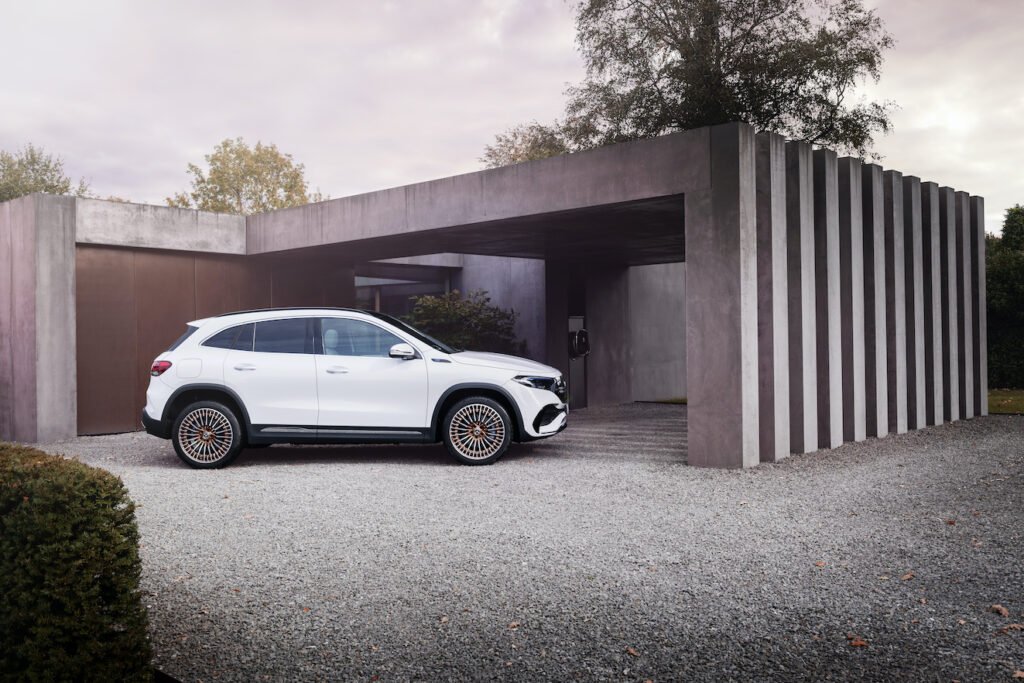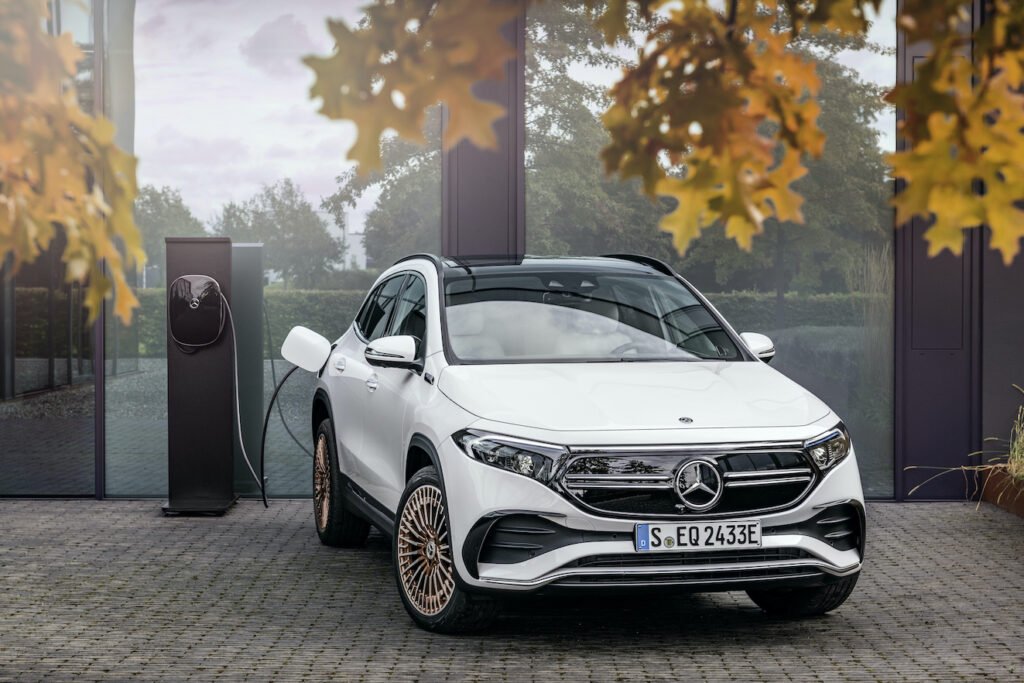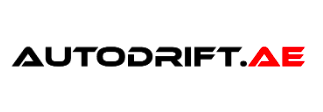EQA is the name of the new entry-level model to the all-electric world of Mercedes-EQ vehicles. The electro-aesthetics of its design are indicative of the Progressive Luxury of the Mercedes-EQ brand. Smart assistants support the driver in many areas: for example with respect to accident avoidance, the anticipatory and therefore particularly efficient operating strategy, and Navigation with Electric Intelligence.
In addition, the car features various exceptional Mercedes-Benz functions, such as MBUX (Mercedes-Benz User Experience). The EQA is a member of the successful compact car family from Mercedes-Benz. A close relation of the GLA, it delivers all the thrilling characteristics of that vehicle, combined in this case with an efficient electric powertrain.
 The new EQA is being built in Rastatt (Germany) and Beijing (China). The battery systems for the EQA are supplied by the Mercedes-Benz subsidiary Accumotive in Kamenz. The battery factory in Jawor, Poland, is also preparing to produce battery systems for the compact Mercedes-EQ models.
The EQA is being launched as the EQA 250 (combined electric consumption: 15.7 kWh/100 km; combined CO2 emissions: 0 g/km)[1] with 140 kW and a range according to NEDC of 486 kilometres[2]. The “double-decker” lithium-ion battery, which sits as a structural element within the underbody of the vehicle, has an energy content of 66.5 kWh. In order to meet the high standard of noise and vibration comfort that is such a hallmark of the brand, complex measures have been taken to isolate the electric powertrain from the chassis and body. Numerous damping measures enhance this effect.
The new EQA is being built in Rastatt (Germany) and Beijing (China). The battery systems for the EQA are supplied by the Mercedes-Benz subsidiary Accumotive in Kamenz. The battery factory in Jawor, Poland, is also preparing to produce battery systems for the compact Mercedes-EQ models.
The EQA is being launched as the EQA 250 (combined electric consumption: 15.7 kWh/100 km; combined CO2 emissions: 0 g/km)[1] with 140 kW and a range according to NEDC of 486 kilometres[2]. The “double-decker” lithium-ion battery, which sits as a structural element within the underbody of the vehicle, has an energy content of 66.5 kWh. In order to meet the high standard of noise and vibration comfort that is such a hallmark of the brand, complex measures have been taken to isolate the electric powertrain from the chassis and body. Numerous damping measures enhance this effect.
 A horizontal fibre-optic strip connects the daytime running lights of the full-LED headlamps, ensuring a high level of recognisability both in daylight and at night. The inside of the headlamps is finished to a high level of quality, detail and precision. Blue colour highlights within the headlamp reinforce the signature Mercedes-EQ appearance.
A horizontal fibre-optic strip connects the daytime running lights of the full-LED headlamps, ensuring a high level of recognisability both in daylight and at night. The inside of the headlamps is finished to a high level of quality, detail and precision. Blue colour highlights within the headlamp reinforce the signature Mercedes-EQ appearance.
 The LED tail lamps merge seamlessly into the tapered LED light strip, thus underlining the impression of width in the rear view of the EQA.
The LED tail lamps merge seamlessly into the tapered LED light strip, thus underlining the impression of width in the rear view of the EQA.
 The licence plate has also been relocated to the bumper. Exclusive to this model are light-alloy wheels in a bi- or tri-colour design, up to 20 inches in size, in some cases with rosé gold-coloured or blue decorative trim.
The licence plate has also been relocated to the bumper. Exclusive to this model are light-alloy wheels in a bi- or tri-colour design, up to 20 inches in size, in some cases with rosé gold-coloured or blue decorative trim.
 The Edition 1 special model additionally features perforated leather seats, through which blue fabric can be seen. The instruments, with their electric car-specific displays, pick up on the same colour scheme with rosé gold-coloured and blue highlights.
The seating position is high and upright, as is typical for an SUV – making it not only comfortable for getting in and out, but also good in terms of all-round visibility. Utility value was one of the general focuses during development. The rear seat backrest is 40:20:40 split-folding.
The Edition 1 special model additionally features perforated leather seats, through which blue fabric can be seen. The instruments, with their electric car-specific displays, pick up on the same colour scheme with rosé gold-coloured and blue highlights.
The seating position is high and upright, as is typical for an SUV – making it not only comfortable for getting in and out, but also good in terms of all-round visibility. Utility value was one of the general focuses during development. The rear seat backrest is 40:20:40 split-folding.
 The new EQA is being built in Rastatt (Germany) and Beijing (China). The battery systems for the EQA are supplied by the Mercedes-Benz subsidiary Accumotive in Kamenz. The battery factory in Jawor, Poland, is also preparing to produce battery systems for the compact Mercedes-EQ models.
The EQA is being launched as the EQA 250 (combined electric consumption: 15.7 kWh/100 km; combined CO2 emissions: 0 g/km)[1] with 140 kW and a range according to NEDC of 486 kilometres[2]. The “double-decker” lithium-ion battery, which sits as a structural element within the underbody of the vehicle, has an energy content of 66.5 kWh. In order to meet the high standard of noise and vibration comfort that is such a hallmark of the brand, complex measures have been taken to isolate the electric powertrain from the chassis and body. Numerous damping measures enhance this effect.
The new EQA is being built in Rastatt (Germany) and Beijing (China). The battery systems for the EQA are supplied by the Mercedes-Benz subsidiary Accumotive in Kamenz. The battery factory in Jawor, Poland, is also preparing to produce battery systems for the compact Mercedes-EQ models.
The EQA is being launched as the EQA 250 (combined electric consumption: 15.7 kWh/100 km; combined CO2 emissions: 0 g/km)[1] with 140 kW and a range according to NEDC of 486 kilometres[2]. The “double-decker” lithium-ion battery, which sits as a structural element within the underbody of the vehicle, has an energy content of 66.5 kWh. In order to meet the high standard of noise and vibration comfort that is such a hallmark of the brand, complex measures have been taken to isolate the electric powertrain from the chassis and body. Numerous damping measures enhance this effect.
EQA Exterior Design:
The EQA features the black panel radiator grille with central star that is the hallmark of Mercedes-EQ. A further distinctive design feature of the all-electric world of Mercedes-EQ vehicles is the continuous light strip at front and rear. A horizontal fibre-optic strip connects the daytime running lights of the full-LED headlamps, ensuring a high level of recognisability both in daylight and at night. The inside of the headlamps is finished to a high level of quality, detail and precision. Blue colour highlights within the headlamp reinforce the signature Mercedes-EQ appearance.
A horizontal fibre-optic strip connects the daytime running lights of the full-LED headlamps, ensuring a high level of recognisability both in daylight and at night. The inside of the headlamps is finished to a high level of quality, detail and precision. Blue colour highlights within the headlamp reinforce the signature Mercedes-EQ appearance.
 The LED tail lamps merge seamlessly into the tapered LED light strip, thus underlining the impression of width in the rear view of the EQA.
The LED tail lamps merge seamlessly into the tapered LED light strip, thus underlining the impression of width in the rear view of the EQA.
 The licence plate has also been relocated to the bumper. Exclusive to this model are light-alloy wheels in a bi- or tri-colour design, up to 20 inches in size, in some cases with rosé gold-coloured or blue decorative trim.
The licence plate has also been relocated to the bumper. Exclusive to this model are light-alloy wheels in a bi- or tri-colour design, up to 20 inches in size, in some cases with rosé gold-coloured or blue decorative trim.
EQA Interior Design:
An indication of the electric character in the interior of the EQA is provided, depending on the design and equipment line, by a new-style back-lit trim element and rosé gold-coloured decorative trim on the ventilation outlets, seats and the vehicle key. The Edition 1 special model additionally features perforated leather seats, through which blue fabric can be seen. The instruments, with their electric car-specific displays, pick up on the same colour scheme with rosé gold-coloured and blue highlights.
The seating position is high and upright, as is typical for an SUV – making it not only comfortable for getting in and out, but also good in terms of all-round visibility. Utility value was one of the general focuses during development. The rear seat backrest is 40:20:40 split-folding.
The Edition 1 special model additionally features perforated leather seats, through which blue fabric can be seen. The instruments, with their electric car-specific displays, pick up on the same colour scheme with rosé gold-coloured and blue highlights.
The seating position is high and upright, as is typical for an SUV – making it not only comfortable for getting in and out, but also good in terms of all-round visibility. Utility value was one of the general focuses during development. The rear seat backrest is 40:20:40 split-folding.
Efficiency is the key factor, from the aerodynamics through to Navigation
With a Cd value from 0.28, the EQA achieves an excellent result. The frontal area A totals 2.47 m2. Among the most important aerodynamic measures are the completely closed cooling air control system in the upper section, the aerodynamically efficient front and rear aprons, a very smooth, almost completely enclosed underbody, specially optimised Aero wheels and specifically adapted front and rear wheel spoilers. The standard heat pump forms part of the sophisticated thermal management system. With its numerous innovative details, such as the reuse of the waste heat from the electric drive system, the system is configured for exceptional efficiency and thus maximum range. It is also possible to set the pre-entry climate control for the interior of the EQA before starting. This function is controlled directly from the MBUX infotainment system or via the Mercedes me App. Adding to the general ease of using the EQA on a day-to-day basis is the standard feature of Navigation with Electric Intelligence. This calculates the fastest route to the given destination. On the basis of continual range simulations, the system makes allowance for any necessary charging stops as well as for numerous other factors, such as the topography and the weather. It is also able to react dynamically to changes, for instance in the traffic situation or personal driving style.Technical data[3]:
| EQA 250 | ||
| Drive system layout | Front | |
| Electric motor, front axle | Model | Asynchronous motor |
| Rated output | kW | 140 |
| Rated torque | Nm | 375 |
| Acceleration 0-100 km/h | s | 8.9 |
| Top speed[4] | km/h | 160 |
| Battery capacity, usable (NEDC) | kWh | 66.5 |
| Combined fuel consumption (NEDC)[5] | kWh/100 km | 15.7 |
| NEDC range3 | km | 486 |
| Charging time[6] at wallbox or at public charging stations (AC charging) | h | 5:45 |
| Charging time[7] at rapid-charging station (DC) | min | 30 |



